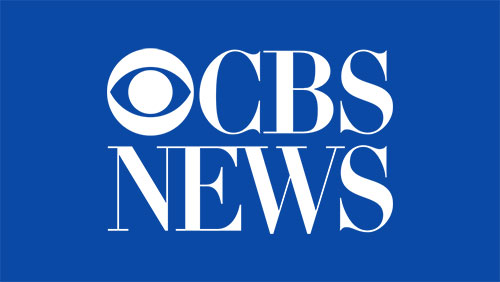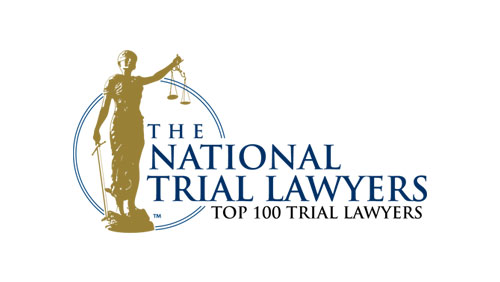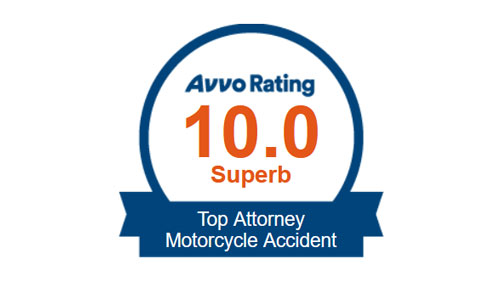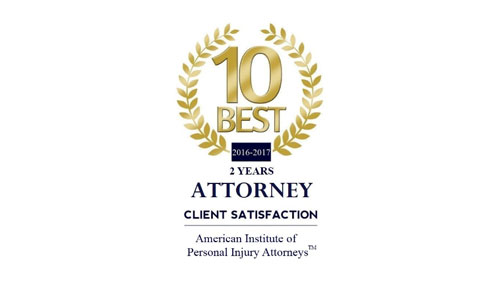
California Personal Injury Laws; Attorney Norman Gregory Fernandez
Personal injury law in California permits accident and injury victims to file claims and lawsuits against those responsible for the harm. For expert help call us at 800-816-1529.

California Personal Injury Laws
Personal injury law in California permits accident and injury victims to file claims and lawsuits against those responsible for the harm.
California’s filing deadline for personal injury lawsuits
All states impose limitations on the amount of time you have to file a civil lawsuit after sustaining an injury. This type of law is known as a statute of limitations, and filing deadlines vary depending on the nature of the case.
The statute of limitations for personal injury cases in California allows an injured person two years from the date of the injury to file a lawsuit against those who may be at fault. If you fail to file a personal injury lawsuit within these two years, the court will likely refuse to hear your case in the future, and you will lose your right to compensation.
There are circumstances that may extend the statute of limitations or affect when the “clock” begins to run.
The statute of limitations for personal injury cases in California can be found in section 335 of the California Code of Civil Procedure.
Claims against a city, county, or state agency in California.
The time limit for filing an injury claim against a government entity is six months, and claimants must adhere to a strict set of procedural rules. (Government Code of California section 911.2)
However, with a two-year statute of limitations from the date of the injury, victims must act swiftly to file claims. If your case is against a governmental entity you only have 6 months to file a claim. For Medical or Dental malpractice you have one year to file a lawsuit.
The majority of personal injury lawyers, including those at our firm The Law Offices of Norman Gregory Fernandez & Associates, work on a contingency basis.
This eliminates the need for victims to pay legal fees out of pocket, as attorneys are paid a percentage of the settlement once it has been collected.
California’s Comparative Fault Laws
In some cases involving personal injury, the defendant may argue that the injured party contributed (at least in part) to the underlying accident.
If you share some degree of liability, it may impact the total amount of compensation you receive from other negligent individuals and businesses.
California applies the “pure comparative negligence” rule in cases involving shared fault for an injury. Simply put, the amount of compensation to which you are entitled will be reduced by an amount equal to your percentage of fault for the accident.
So, let’s say you were involved in a car accident where the other driver ran a stop sign while you were driving a few miles per hour over the posted speed limit. You may share 10% of the fault for the collision, while the other driver is 90% at fault. Let’s say your losses (damages) add up to $100,000. How does your proportional share of fault affect your compensation? Under California’s rule of pure comparative negligence, your compensation will be reduced to $90,000 (or $100,000 minus the $10,000 that represents your share of fault in the accident).
Keep in mind that, although California courts are required to follow this rule in injury lawsuits that proceed to trial, it may be a different story when dealing with an insurance adjuster outside of court. Don’t be surprised if the adjuster brings up California’s comparative negligence rule during settlement negotiations; however, you are free to negotiate its impact on your claim. You will almost certainly get less money without an attorney. Do not go up against the insurance companies alone. Call us now for a consultation at 800-816-1529.
“Strict” Dog Bite Liability in California
In a number of states, dog owners are partially shielded from injury liability the first time their dog injures someone if they had no reason to believe the dog was dangerous. This is commonly known as the “one bite” rule. In California, however, a specific statute (California Civil Code section 3342) makes the owner “strictly liable,” meaning that the dog owner is legally responsible when their dog bites someone, regardless of the degree of fault or negligence. Specifically, the statute states: “The owner of any dog is liable for the damages suffered by any person who is bitten by the dog while in a public place or lawfully in a private place, including the owner’s property, regardless of the dog’s previous viciousness or the owner’s knowledge of such viciousness.”
Damage Restrictions in California
Here are a few California statutes that limit the amounts (or types) of damages that can be recovered in personal injury cases.
No damages for non-economic pain and suffering for uninsured motorists. Even if the other driver is wholly at fault for the accident, California law prohibits most uninsured motorists from recovering “non-economic” damages following a car accident.
Pain and suffering (typically the largest category of non-economic compensation), scarring, emotional distress, and inconvenience are examples of non-economic damages.
An important exception to this rule is if the uninsured driver is involved in an accident with a driver who is operating a vehicle while under the influence of drugs or alcohol and that driver is convicted of DUI in connection with the accident. Section 3333 of the California Civil Code contains this statute. The limitation of noneconomic damages in medical malpractice cases.
The Medical Injury Compensation Reform Act (MICRA) limits non-economic damages in medical malpractice cases to 0,000 in California.
Section 1714 of the California Civil Code provides the statutory foundation for negligence-based injury actions in that state, stating in part that “Everyone is responsible, not only for the result of his or her willful acts, but also for an injury caused to another by his or her lack of ordinary care or skill in the management of his or her property or person.”
A personal injury attorney may be able to provide you with information that is specific to your circumstances. For help give us a call at 800-816-1529.
More laws as they relate to potential personal injury cases in California
Pedestrian Regulations
Drivers are required to stop and yield the right-of-way to pedestrians within a marked or unmarked crosswalk. Pedestrians should not enter a crosswalk if doing so would immediately endanger them due to nearby traffic. When a “walk” signal illuminates, pedestrians facing the signal have the right-of-way to cross the roadway in the direction of the signal. Pedestrians should not begin walking when a “don’t walk” or “wait” signal is displayed.
Crossing a road outside of a marked or unmarked crosswalk requires pedestrians to yield the right-of-way to vehicles.
Traffic laws
Among the most important laws that motorists must obey are the following:
- Passing – Drivers are required to pass on the left at a safe distance and remain in the passing lane until it is safe to return to the right lane. Passing motorists should not increase their speed when being passed.
- Following – A driver may not follow another driver closer than is reasonable and prudent, taking into account the speed of other drivers and traffic conditions.
- Turning left – Left-turning motorists must signal properly and should only make the turn when it can be made safely.
- Intersections – If two drivers simultaneously approach an intersection, the driver on the left must yield to the driver on the right.
- Mobile devices – Drivers are prohibited from operating a motor vehicle while using a mobile electronic device unless it is configured to allow voice-operated and hands-free operation to dictate, send, or receive text-based communications.
Motorcycle Laws
On public roads, all motorcyclists and their passengers are required to wear helmets. At night, motorcycle headlights must be activated.
Insurance Requirements
In California, vehicle owners are required to have liability coverage that meets the minimum requirements for:
- $15,000 per individual
- $30,000 for two or more individuals
- $5,000 per incident for damage to property
Under California’s no-fault insurance system, every owner of a motor vehicle is liable and responsible for an injury to a person, death of a person, or property damage caused by a negligent or wrongful act or inaction, up to the liability limits discussed above. A car accident victim may file a lawsuit against the driver if he or she can prove that the driver’s intoxication or intentional misconduct caused the injury or death.
Duty to Provide Information and Assistance
A driver involved in an auto accident that results in injuries or fatalities must render aid and provide their information. A driver must report such an accident within 24 hours to the California Highway Patrol or local police department.
Dram Shop Legislation
Dram shop law refers to the liability of commercial establishments that serve intoxicated customers who then cause harm to others. If a business serves alcohol to a minor and that alcohol is the direct cause of a third party’s physical injury or death, the business may be held liable.
Dog Bites
Numerous states employ a “one bite rule” that protects dog owners from injury liability the first time their dog injures someone, provided they had no reason to believe the dog was dangerous. California is not one of these states, however. Instead, the state imposes strict liability on the dog owner for all dog bites, including the initial incident. The dog owner is liable if the dog bites someone in a public place or lawfully in a private place.
Medical Malpractice
Medical malpractice refers to a healthcare provider who provides substandard care to a patient. The defendant’s breach must result in harm to the plaintiff. The standard of care refers to the generally accepted procedures and practices that reasonable healthcare practitioners in the same area and specialty would use to treat a patient with the same condition under the same circumstances. Various factors, such as the patient’s age and health, can influence the standard of care.
Medical malpractice is more than a simple medical error. The patient must have been injured as a result of the error. The error can occur at any stage of the treatment procedure. This process entails administering medical care, diagnosing a patient, prescribing medication, and conducting examinations.
Plaintiffs in medical malpractice lawsuits in California are subject to additional procedural requirements and restrictions. For instance, plaintiffs must give their doctor or other health care provider whom they intend to sue at least 90 days prior to filing the complaint in the case. This notice must contain the following details:
- The legal basis for the claim
- The nature of the damages and injuries sustained
If this notice is served within 90 days of the statute of limitations (discussed below), the deadline for filing a lawsuit must be extended by 90 days from the date this notice was served.
Attorney fees in medical malpractice cases are also subject to caps. As described, the percentage a lawyer can charge for these cases is limited by a sliding scale:
- 40% of the first $50,000 recovered. For instance, if a person recovered $750,000 in damages, the maximum attorney fee would be $184,000, as shown below:
- $20,000 for the initial $50,000
- $16,500 for the subsequent $50,000
- $125,000 of the subsequent $500,000
- $22,500 of the subsequent $150,000
Product Flaws
Additionally, California has a number of laws regarding defective products. To prevail on this type of claim, a plaintiff must prove the following:
- The defendant designed, manufactured, distributed, or sold a defective product;
- The product was defective when it left the defendant’s possession;
- The plaintiff used the product in a reasonably foreseen manner; and
- The plaintiff suffered damages as a result of the defect.
Manufacturers must consider how the average consumer will use and misuse a product when determining if it was used in a reasonably foreseeable manner. A jury decides whether or not the defendant took reasonable precautions and whether or not the plaintiff’s use was reasonably foreseeable.
The strict liability laws of California allow a plaintiff to hold a defendant strictly liable for his or her injuries, even if the plaintiff cannot demonstrate that the defendant was negligent.
The following types of product defects fall under strict liability:
- Manufacturing defects – These defects occur when a mistake is made during the manufacturing process, resulting in a defective batch of products.
- Design defects – These occur when a product is inherently flawed due to a hazardous design.
- Warning defect – These defects occur when insufficient warnings are provided.
Negligence
In California, the majority of personal injury cases are brought under the theory of negligence. It is necessary to demonstrate the following legal elements:
- The defendant owed the plaintiff a duty of care;
- The defendant breached the duty of care;
- The plaintiff was injured;
- The defendant’s negligence played a significant role in causing the injury;
The duty of care may be imposed by law, such as when teachers are required to supervise children in their care or when drivers are required to obey traffic laws. Negligence occurs when a person fails to take reasonable precautions to protect himself or others from harm. Regarding the duty of care, a jury must determine what a reasonably prudent person would have done in the same or similar circumstances.
Premises Liability
Premises liability refers to the responsibility of property owners and those in control of the premises for injuries and damages resulting from the ownership or control of the property.
Included in premises liability claims are:
- Slip-and-fall accidents
- Trip and fall accidents
- Construction accidents
- Dog bites
- Injuries resulting from the negligence or intentional misconduct of a third party
These claims are based on the same principles as negligence, such as duty, breach of duty, causation, and damages. However, special rules exist to assist in determining whether these elements have been established.
Important factors in determining the identity of parties liable for damages are ownership, possession, and control of the premises. Without these elements, the party has no duty to exercise reasonable care. Owners or possessors of property have a duty to act reasonably to maintain the safety of the property and protect others from harm.
Depending on the circumstances, various duties may be required. Hidden or latent dangers should be eliminated, or the property owner should warn others of their presence. The proprietors of retail establishments should conduct reasonable inspections and eliminate discovered hazards. In addition to addressing potential hazards on the property, owners may also be liable for the actions of third parties. If a property owner has reason to believe that third parties will commit unlawful acts on the property in the future, he or she is obligated to take measures to prevent such conduct.
When determining if a legal obligation exists, courts can consider a variety of factors, such as:
- The proximity between the defendant’s conduct and the injury suffered
- The moral blame applied to the conduct of the defendant
- The foreseeability of harm
- The degree of certainty that the plaintiff suffered injury
- Policies to prevent future harm
- The defendant’s extent and burden of imposing a duty to exercise care with liability for breaching the duty of care
- The cost and availability of insurance for the risk at hand.
Limitation of Liability Statute
The statute of limitations is the deadline for filing a lawsuit against a wrongdoer. The statute of limitations for most personal injury claims in California is two years. This indicates that a victim of personal injury has two years from the date of the accident to file a lawsuit. If the injury is unknown, the plaintiff has one year from the date of discovery to file a lawsuit.
If the accident is filed against a government entity, the plaintiff must file a claim for damages within six months and adhere to certain procedural rules.
Rule of Pure Comparative Negligence
In many cases of personal injury, multiple parties may be at fault. Sometimes, the victim is also partially responsible. The state of California applies a system of pure comparative negligence to these cases. Under this system, an accident victim’s compensation is reduced by an amount proportional to his or her degree of fault for the accident. For instance, if a person suffers $100,000 in damages and is found to be 20% at fault, he or she is limited to recovering no more than $80,000. If the victim was primarily responsible for the accident, he or she cannot file a claim.
Damage Limits and Caps
The state of California has regulations governing when damage awards must be capped or limited. Examples include:
No Non-Economic Damages for Drivers Without Insurance
Economic damages are those damages that have a monetary value attached to them that are often easier to quantify, such as medical expenses incurred after a car accident or lost wages that a personal injury victim suffered. Non-economic damages refer to other damages that are not attached to any economic harm and include damages for such items as pain and suffering, inconvenience, or disfigurement.
California law generally prevents uninsured drivers from recovering non-economic damages after a car accident, even if the other driver is completely at fault. There is an exception to this rule, however. If the uninsured driver is in an accident with an intoxicated driver and the intoxicated driver is convicted of DUI related to the accident, the rule will not be imposed.
Medical Malpractice Cases
In cases of medical malpractice, damages are also limited. In medical malpractice cases, non-economic damages are capped at $250,000.
Contact a California Personal Injury Lawyer
If you were injured in a California accident and wish to learn more about your legal rights and options, you may wish to contact an experienced California personal injury attorney at the Law Offices of Norman Gregory Fernandez & Associates at 800-816-1529.
We will explain your rights and handle all communications with the insurance company. In addition, we will identify the parties who may be legally responsible for your injuries and the applicable legal theories.
It is important to choose a personal injury attorney who has experience with the specific type of personal injury claim you are pursuing, such as medical malpractice or product defects. We have well over two decades of experience handling personal injury cases all over California.
The majority of personal injury attorneys in California charge on a contingency fee basis, which means they do not receive payment unless they are able to recover compensation through a settlement or jury award.
If the plaintiff is unsuccessful in court, the attorney may not be paid for his or her services. However, the attorney may be entitled to reimbursement for legal expenses, but not legal fees. Legal expenses consist of charges such as copying fees, phone charges, filing fees, fees paid to expert witnesses, and other litigation-related expenses. The client may be required to pay these costs in advance, or the attorney may advance the costs and then be reimbursed. A retainer agreement should contain this information.
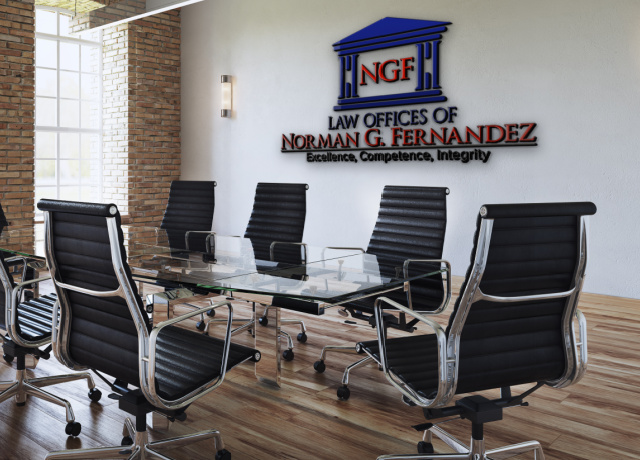
Get Help Now
The Law offices of Norman Gregory Fernandez & Associates has over 25 years experience handling personal injury cases all over the state of California. We have handled thousands of cases and obtained millions of dollars in settlements and judgments for our clients. Call now for a no pressure free consultation with an actual attorney. 800-816-1529 extension 1.
You can download our California Accident App for iOS and Android by clicking here and visiting our California Accident App page. This application will allow you to record and transmit all information related to your California personal Injury case to our office.
Contact Us Quickly
For a free Consultation
Or Call our 24 hour helpline NOW!
800-816-1529


